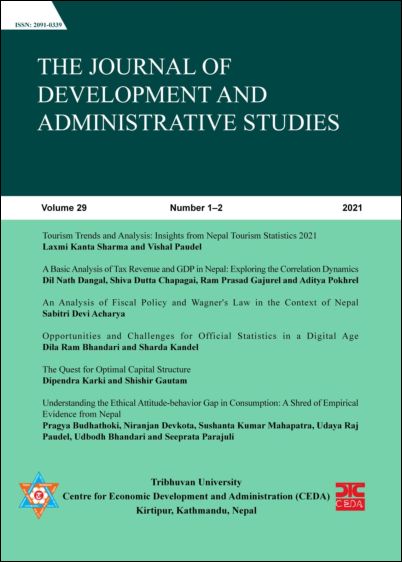An Analysis of Fiscal Policy and Wagner's Law in the Context of Nepal
DOI:
https://doi.org/10.3126/jodas.v29i1-2.68212Keywords:
Government expenditure, Real GDP growth, Governance, Co-integrationAbstract
There is a lot of discussion among economists about the relationship between expenditure of the government and gross domestic product (GDP). The paper seeks to examine the association between GDP and government expenditure by utilizing the concept of Wagner’s Law. Both long run and short run relationships are examined by use of popular econometric techniques. From the result of Engle-Granger test the significance of Wagner's law is found in the context of Nepal when taking governance and government capital expenditure as the independent variables of economic growth. It has been found that when GDP increases by one percent, capital spending rises by 0.4 percent in the long run. However, the Granger causality test does not reveal any causal relationship between the variables of interest.
Downloads
Downloads
Published
How to Cite
Issue
Section
License
The copyright of the accepted articles is reserved by the Centre for Economic Development and Administration (CEDA), Tribhuvan University (TU). No part of the article published in this journal should be reproduced except provided by the law currently in force without the written consent of the centre.




